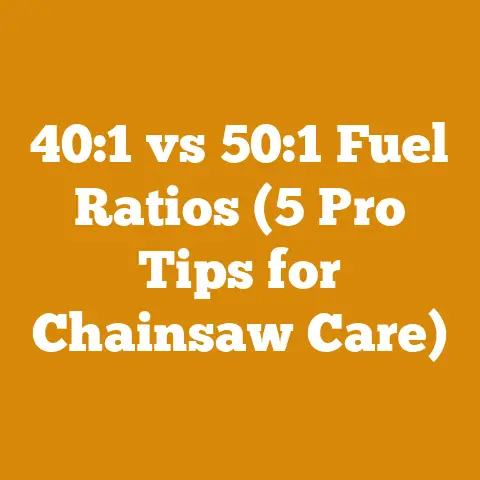Outside Forced Air Wood Burner (5 Pro Tips for Maximum Heat)
Why did the wood burner break up with the firewood? Because they needed space!
Okay, now that we’ve warmed things up with a little humor, let’s dive into the heart of the matter: maximizing heat from your outdoor forced-air wood burner. As someone who’s spent countless hours splitting wood, wrestling with chainsaws, and yes, even freezing my fingers off trying to get a stubborn fire going, I know the value of every BTU (British Thermal Unit). And I also know how quickly costs can add up if you’re not careful.
This isn’t just about keeping your toes toasty in winter; it’s about efficiency, sustainability, and making your wood-burning setup cost-effective. We’ll tackle everything from wood selection to optimizing your burn settings, and I’ll share some real-world experiences and cost-saving strategies I’ve learned over the years.
5 Pro Tips for Maximum Heat from Your Outdoor Forced-Air Wood Burner
Outdoor forced-air wood burners are a fantastic way to heat your home or workshop, especially if you have access to a steady supply of wood. But, simply throwing logs into the firebox isn’t enough. To truly maximize heat output and minimize your wood consumption (and therefore, your costs), you need a strategic approach. Here are five pro tips to get you started:
1. The Right Wood: Species Selection and Moisture Content
This is where it all begins. Think of your wood as the fuel for your furnace. Just as you wouldn’t put low-grade gasoline in a high-performance car, you shouldn’t burn subpar wood in your outdoor burner.
-
Species Matters: Hardwoods are your best bet. They’re denser and burn longer, producing more heat. Oak, maple, ash, and beech are excellent choices. Softwoods like pine and fir burn quicker and produce less heat. They are also more prone to creating creosote, a flammable byproduct that can build up in your chimney and pose a fire hazard.
- Regional Variations: The best wood species available to you will depend on your location. For instance, in the northeastern United States, sugar maple is a readily available and high-heat option. In the Pacific Northwest, alder is common, although it’s a softer hardwood and should be well-seasoned.
-
Moisture Content is King: This is absolutely crucial. Wet wood is the enemy of efficient burning. It wastes energy just to evaporate the water, resulting in less heat, more smoke, and increased creosote buildup.
-
Ideal Moisture Content: You want your wood to be below 20% moisture content. This is considered “seasoned” wood.
- How to Check: A moisture meter is your best friend. These inexpensive tools can be purchased online or at hardware stores. Simply split a piece of wood and insert the meter prongs into the freshly exposed surface.
- Seasoning Time: The time it takes to season wood varies depending on the species, climate, and how you stack it. Generally, expect at least six months to a year for hardwoods. Softwoods can season faster.
- Stacking for Success: Stack your wood in a single row, off the ground, with good air circulation. This allows the wind and sun to dry it out effectively. Covering the top of the stack with a tarp or metal sheet can help prevent rain and snow from soaking it.
Cost Considerations:
Okay, let’s talk money. The price of firewood varies significantly based on location, species, and whether you buy it seasoned or unseasoned.
- Price per Cord: A cord of firewood is a stack that measures 4 feet high, 4 feet wide, and 8 feet long, totaling 128 cubic feet. As of late 2023, the average price for a cord of seasoned hardwood in the US ranged from $200 to $400, but I’ve seen it much higher in some areas, especially in urban centers or regions with high demand.
- Unseasoned vs. Seasoned: Unseasoned wood is typically cheaper, but you’ll need to factor in the time and effort to season it yourself. Plus, you won’t be able to burn it right away.
- Buying in Bulk: If you have the space, buying in bulk can save you money in the long run. Contact local logging companies or tree service businesses – they often have wood available at a lower price than firewood retailers.
- Harvesting Your Own: This is the most cost-effective option, but it requires more work and equipment. You’ll need a chainsaw, safety gear, and possibly a log splitter.
Personal Story: I remember one year, I was desperate to save money on firewood. I found a local farmer selling unseasoned oak for a steal. I thought I was being clever, but I quickly realized I had underestimated the work involved in splitting and stacking that much wood. And, to make matters worse, it took almost two years for it to season properly. Lesson learned: sometimes, the upfront cost of seasoned wood is worth it!
Data Point: According to the US Energy Information Administration (EIA), wood is a renewable energy source, but its efficiency depends heavily on proper preparation and burning practices. Burning properly seasoned wood can increase heat output by as much as 30% compared to green wood.
2. Airflow Optimization: Damper Settings and Chimney Height
Your outdoor wood burner needs the right amount of air to burn efficiently. Too little air, and the fire will smolder and produce smoke. Too much air, and the fire will burn too quickly, wasting wood.
- Damper Settings: The damper controls the amount of air entering the firebox. Experiment with different settings to find the sweet spot for your wood burner. Start with the damper fully open and gradually close it until you see a clean, bright flame.
- Chimney Height: A properly sized chimney is essential for creating draft. The draft pulls air into the firebox and carries exhaust gases out of the chimney. If your chimney is too short, it won’t create enough draft. If it’s too tall, it can create too much draft, causing the fire to burn too hot and quickly. Consult your wood burner’s manual for recommended chimney height.
- Chimney Maintenance: Regularly inspect and clean your chimney to remove creosote buildup. A clogged chimney restricts airflow and increases the risk of a chimney fire.
Cost Considerations:
- Chimney Extension: If your chimney is too short, you may need to add an extension. Chimney extensions can cost anywhere from $50 to $200 per section, depending on the material and diameter.
- Chimney Cleaning: Hiring a professional chimney sweep typically costs between $150 and $300. You can also clean your chimney yourself with a chimney brush and some elbow grease. Chimney brushes range in price from $30 to $100.
Data Point: The National Fire Protection Association (NFPA) recommends having your chimney inspected and cleaned at least once a year, especially if you burn wood frequently. A clean chimney not only improves efficiency but also reduces the risk of a dangerous chimney fire.
3. Loading Techniques: Building the Perfect Fire
How you load your wood burner can significantly impact its heat output and burn time.
- Top-Down vs. Bottom-Up: The traditional bottom-up method involves starting with kindling and gradually adding larger pieces of wood. The top-down method, which is gaining popularity, involves placing larger logs on the bottom and kindling on top. The fire burns downward, which can result in a cleaner, more efficient burn.
- Stacking Method: Whether you choose top-down or bottom-up, the way you stack your wood is crucial. Leave space between the logs to allow for airflow. Avoid tightly packing the firebox, as this can restrict airflow and cause the fire to smolder.
- Wood Size: Use a variety of wood sizes, from small kindling to larger logs. This will help you get the fire started quickly and maintain a consistent burn.
Cost Considerations:
- Log Splitter: If you’re processing your own wood, a log splitter can save you a lot of time and effort. Manual log splitters are the most affordable, ranging from $100 to $300. Hydraulic log splitters are more powerful and efficient, but they’re also more expensive, ranging from $500 to $3,000 or more.
- Chainsaw: A good chainsaw is essential for cutting firewood. Gas-powered chainsaws are more powerful and portable, but they require more maintenance. Electric chainsaws are quieter and easier to use, but they’re limited by the length of the cord. Chainsaw prices range from $100 to $1,000, depending on the size and features.
Personal Story: I used to think that just throwing a bunch of wood into the firebox was good enough. But, after experimenting with different loading techniques, I realized that the top-down method is far superior for my wood burner. It burns cleaner, longer, and produces more heat. Plus, it’s easier to get the fire started.
4. Burn Settings and Monitoring: Fine-Tuning for Efficiency
Once you have the fire going, it’s important to monitor the burn and adjust the settings as needed.
- Temperature Gauge: Install a temperature gauge on your wood burner’s flue pipe. This will help you monitor the temperature of the exhaust gases. Aim for a temperature range that is recommended by the manufacturer. Too low, and you’ll have creosote buildup. Too high, and you’ll waste wood.
- Air Control: Adjust the air control to maintain a consistent burn. If the fire is burning too hot, close the air control slightly. If the fire is smoldering, open the air control.
- Reloading: Reload your wood burner before the fire burns down completely. This will help you maintain a consistent temperature and avoid having to start the fire from scratch.
Cost Considerations:
- Temperature Gauge: A good temperature gauge can cost anywhere from $20 to $50.
- Automatic Draft Control: Some wood burners come with automatic draft control systems that automatically adjust the air intake based on the temperature of the exhaust gases. These systems can improve efficiency and reduce wood consumption, but they’re also more expensive.
Data Point: Studies have shown that properly monitoring and adjusting your wood burner’s settings can improve efficiency by as much as 15%. This can translate into significant savings on your firewood bill.
5. Insulation and Placement: Minimizing Heat Loss
Even with the most efficient wood burner, you’ll lose heat if your home or workshop isn’t properly insulated.
- Insulation: Make sure your walls, ceilings, and floors are properly insulated. This will help you retain heat and reduce your heating costs.
- Placement: Place your wood burner in a central location in your home or workshop. This will help distribute heat evenly.
- Sealing Air Leaks: Seal any air leaks around windows, doors, and other openings. This will prevent drafts and reduce heat loss.
Cost Considerations:
- Insulation: The cost of insulation varies depending on the type of insulation and the size of your home or workshop. Blown-in insulation is typically the most affordable option, while spray foam insulation is more expensive but also more effective.
- Weather Stripping: Weather stripping is an inexpensive way to seal air leaks around windows and doors. It can cost anywhere from $5 to $20 per roll.
Personal Story: I once lived in an old farmhouse that was poorly insulated. My wood burner worked overtime just to keep the house warm. After I insulated the walls and attic, I noticed a significant reduction in my firewood consumption. The house was much warmer, and my heating bills were much lower.
Calculating Wood Costs: A Deeper Dive
Now, let’s get into the nitty-gritty of calculating wood costs. This is where careful planning and record-keeping can save you serious money.
Understanding Wood Measurement
- Cord: As mentioned earlier, a cord is 128 cubic feet.
- Face Cord (or Rick): This is a stack of wood 4 feet high and 8 feet long, but the width varies. The price of a face cord should be adjusted based on the length of the wood. For example, if the wood is 16 inches long, a face cord is one-third of a full cord.
- Board Foot: This is a unit of measurement for lumber, not typically used for firewood, but it’s helpful to understand if you’re harvesting your own timber. It represents a piece of wood 12 inches long, 12 inches wide, and 1 inch thick.
Cost Breakdown: Harvesting Your Own Wood
This is where things get interesting, and where you can potentially save the most money, but also where hidden costs can creep in. Let’s break down the expenses:
- Timber Purchase or Harvesting Rights: If you’re harvesting from your own land, this cost is minimal (property taxes, essentially). However, if you need to purchase timber rights, this can be a significant expense. Prices vary wildly depending on location, species, and the volume of timber. I’ve seen timber rights go for as little as $50 per acre in some rural areas to upwards of $500 per acre in more desirable locations.
- Equipment Costs: This is where your initial investment comes in.
- Chainsaw: As mentioned, prices range from $100 to $1,000. Factor in the cost of bar oil, chain sharpening, and fuel.
- Log Splitter: Manual or hydraulic, these can range from $100 to $3,000.
- Safety Gear: Helmet, eye protection, hearing protection, gloves, and chaps are essential. Budget around $100 – $300 for a complete set.
- Truck or Trailer: You’ll need a way to transport the wood. Factor in fuel costs and maintenance.
- Labor Costs: This is your time! Be honest with yourself about how much your time is worth. Even if you’re not paying yourself an hourly wage, consider the opportunity cost – what else could you be doing with that time?
- Permits: In some areas, you may need a permit to harvest timber, even on your own land. Check with your local authorities.
Example Calculation:
Let’s say you’re harvesting wood from your own land. Here’s a rough estimate of the cost to produce one cord of firewood:
- Equipment Depreciation: (Chainsaw, Log Splitter, etc.) – Let’s estimate $50 per cord (assuming you’ll get multiple cords out of the equipment).
- Fuel and Oil: $20 per cord.
- Maintenance: $10 per cord.
- Your Labor: Assuming it takes you 8 hours to harvest, split, and stack one cord, and you value your time at $20 per hour, that’s $160.
Total Cost: $50 + $20 + $10 + $160 = $240 per cord
This is just an example, of course. Your actual costs may vary. But it illustrates the importance of considering all the factors involved.
Cost Breakdown: Buying Firewood
- Price per Cord: As mentioned earlier, this can range from $200 to $400 or more, depending on location and species.
- Delivery Fees: Some suppliers charge extra for delivery.
- Stacking Fees: Some suppliers will stack the wood for you, but they’ll charge extra for it.
Example Calculation:
Let’s say you buy a cord of seasoned oak for $300, and the delivery fee is $50.
Total Cost: $300 + $50 = $350 per cord
Tips for Cost Optimization
- Buy in the Off-Season: Firewood prices tend to be lower in the spring and summer.
- Negotiate: Don’t be afraid to negotiate with firewood suppliers.
- Season Your Own Wood: If you have the time and space, buying unseasoned wood and seasoning it yourself can save you money.
- Share Resources: Consider splitting the cost of equipment with a neighbor or friend.
- Look for Free Wood: Keep an eye out for fallen trees or branches after storms. Just make sure you have permission to collect the wood.
- Proper Maintenance: Regularly maintain your equipment to extend its lifespan and avoid costly repairs.
- Efficiency is Key: Use the tips outlined earlier to maximize the heat output of your wood burner.
Global Considerations: Firewood Costs Around the World
Firewood costs and availability vary dramatically around the world, influenced by factors like climate, forest management practices, and local regulations.
- Europe: In many parts of Europe, firewood is a common heating source, particularly in rural areas. Prices can be relatively high due to stricter environmental regulations and sustainable forestry practices. For example, in Germany, a cubic meter (approximately 0.276 cords) of seasoned hardwood can cost upwards of €100 (roughly $110 USD).
- Asia: In some Asian countries, like China and India, firewood remains a primary fuel source for cooking and heating, especially in rural communities. However, deforestation and air pollution concerns have led to increased regulation and promotion of alternative fuels.
- Africa: Firewood is the dominant fuel source in many African countries, but unsustainable harvesting practices have led to deforestation and environmental degradation. The cost of firewood can be relatively low in some areas, but the environmental and social costs are significant.
- Australia: Firewood is a popular heating option in many parts of Australia, particularly in colder regions. Prices vary depending on the species and availability, but generally, it’s more affordable than in Europe.
Data Point: According to the Food and Agriculture Organization of the United Nations (FAO), approximately 2.4 billion people worldwide rely on wood fuel for cooking and heating. This highlights the global importance of sustainable forest management and efficient wood-burning practices.
Challenges for Small-Scale Loggers and Firewood Suppliers
Running a small-scale logging or firewood business is tough. Here are some of the challenges they face:
- Competition: They often compete with larger companies that can offer lower prices.
- Regulations: They must comply with a variety of regulations, including environmental regulations and safety regulations.
- Equipment Costs: They need to invest in expensive equipment, such as chainsaws, log splitters, and trucks.
- Labor Costs: Finding and retaining reliable labor can be difficult.
- Seasonality: Demand for firewood is seasonal, which can make it difficult to maintain a steady income.
- Weather: Weather conditions can impact their ability to harvest and process wood.
How to Support Local Suppliers:
- Buy Local: Support local firewood suppliers whenever possible.
- Pay Fair Prices: Be willing to pay a fair price for firewood.
- Be Patient: Understand that small-scale suppliers may not be able to deliver wood immediately.
- Spread the Word: Tell your friends and neighbors about your favorite local suppliers.
Actionable Takeaways and Next Steps
Okay, we’ve covered a lot of ground. Here’s a summary of the key takeaways and some actionable steps you can take to maximize heat from your outdoor forced-air wood burner and manage your costs:
- Wood Selection is Paramount: Prioritize hardwoods with low moisture content. Invest in a moisture meter.
- Optimize Airflow: Experiment with damper settings and ensure your chimney is the correct height and clean.
- Master Loading Techniques: Try the top-down method for a cleaner, more efficient burn.
- Monitor and Adjust: Use a temperature gauge and adjust air control to maintain a consistent burn.
- Insulate and Seal: Minimize heat loss by insulating your home or workshop and sealing air leaks.
- Calculate Your Costs: Track your expenses to understand the true cost of heating with wood.
- Support Local Suppliers: Buy firewood from local suppliers whenever possible.
Next Steps:
- Assess Your Wood Supply: Determine how much firewood you need for the upcoming winter.
- Shop Around: Get quotes from multiple firewood suppliers.
- Inspect Your Chimney: Schedule a chimney inspection and cleaning.
- Insulate Your Home: Identify areas where you can improve insulation.
- Start Seasoning Wood: If you plan to season your own wood, start now.
Final Thoughts: A Warm and Cost-Effective Winter
Heating with wood can be a rewarding and cost-effective way to stay warm in the winter. By following these pro tips, you can maximize the heat output of your outdoor forced-air wood burner, minimize your wood consumption, and manage your costs effectively. Remember, it’s not just about burning wood; it’s about burning it smart. So, stay warm, stay safe, and enjoy the cozy comfort of a wood-heated home. And remember, a little bit of humor can go a long way, even when you’re dealing with firewood!






